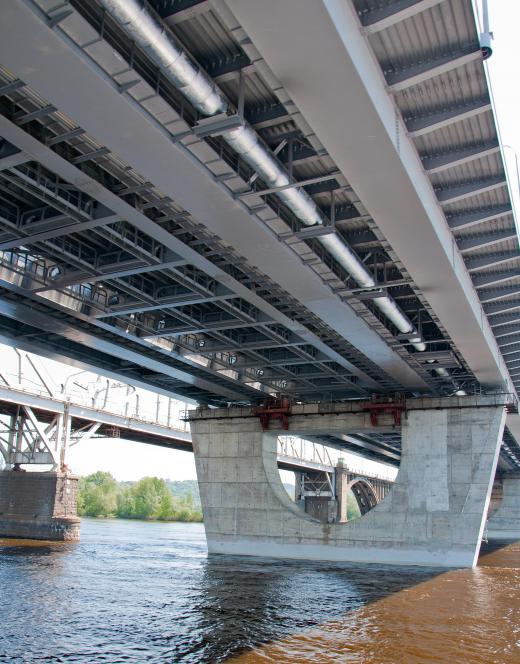A continuous beam is a structural component that provides resistance to bending when a load or force is applied. These beams are commonly used in bridges. A beam of this type has more than two points of support along its length. These are usually in the same horizontal plane, and the spans between the supports are in one straight line.
In contrast to a simply supported beam, which has supports at each end and a load that is distributed in some way along its length, a continuous beam is much stiffer and stronger. A bridge that is made up of beams that span between only two supports is called a simply supported beam bridge. If two or more beams are joined together rigidly over multiple supports, the bridge becomes continuous.

The two main factors for consideration in the design of a continuous beam are the type of load and the strength characteristics of the material used to construct the beam. The reactions that occur at the supports of a simply supported beam can be determined by analyzing only the forces applied to the beam. For this reason, simple beams are known as statically determinate. A continuous beam has more supports than are required to provide equilibrium, and the deformation behavior under load is also considered when determining the support reactions. As a result, this type of beam is known as statically indeterminate.
The construction of a continuous beam will influence its bending and deflection when a force is applied. Carbon steel is commonly used for structural beams due to its high strength and resistance to bending. Beams are also constructed using a variety of other materials, including wood, aluminum, and concrete, depending upon the application.
Today, these types of beams are often designed using engineering software that accepts input data and determines a design to meet the performance requirements. Input factors may include the types of forces applied, the span between supports, the beam shape, the material strength properties, and the mechanical connections to other structural members.
A continuous beam must be designed to withstand forces and stress while minimizing weight, space requirements, and material cost. Most beams are designed with a safety factor, which serves to oversize the beam to protect against loading and other factors that cannot be predicted in advance. The selection of an appropriate safety factor is based on the specific application in combination with good engineering judgment. A margin of safety that is too high will drive a beam design that is larger than needed, causing possible weight problems and higher fabrication costs.
